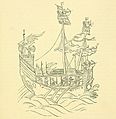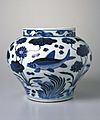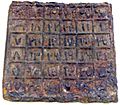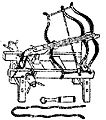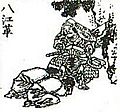Yuan dynasty facts for kids
Quick facts for kids
Great Yuan
大元
ᠶᠡᠬᠡ ᠶᠤᠸᠠᠨ ᠤᠯᠤᠰ |
|||||||||||||
|---|---|---|---|---|---|---|---|---|---|---|---|---|---|
| 1271–1368 | |||||||||||||
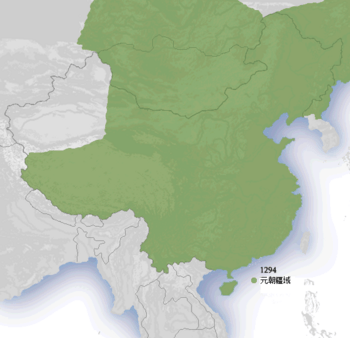
Yuan dynasty circa 1294
The situation of Goryeo was disputed |
|||||||||||||
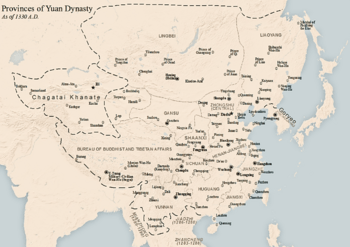
Provinces of Yuan in 1330
|
|||||||||||||
| Status | Khagan-ruled division of the Mongol Empire Conquest dynasty in China |
||||||||||||
| Capital | Khanbaliq (Beijing) | ||||||||||||
| Common languages | Mongolian Chinese |
||||||||||||
| Religion | Buddhism (Tibetan Buddhism as de facto state religion), Heaven worship, Shamanism, Taoism, Confucianism, Chinese folk religion, Chinese Nestorian Christianity, Roman Catholic Christianity, Judaism, Chinese Manichaeism, Islam, Legalism | ||||||||||||
| Government | Monarchy | ||||||||||||
| Emperor | |||||||||||||
|
• 1260–1294
|
Kublai Khan | ||||||||||||
|
• 1333–1368
|
Toghon Temür | ||||||||||||
| Chancellor | |||||||||||||
| Historical era | Postclassical Era | ||||||||||||
|
• Genghis Khan founds Mongol Empire
|
Spring, 1206 | ||||||||||||
|
• Formal proclamation of the Yuan dynasty
|
5 November 1271 | ||||||||||||
|
• Battle of Xiangyang
|
1268–1273 | ||||||||||||
|
• Conquest of Southern Song
|
4 February 1276 | ||||||||||||
| 19 March 1279 | |||||||||||||
|
• Red Turban Rebellion
|
1351–1368 | ||||||||||||
|
• Fall of Khanbaliq
|
14 September 1368 | ||||||||||||
|
• Formation of Northern Yuan dynasty
|
1368–1388 | ||||||||||||
| Area | |||||||||||||
| 1310 | 11,000,000 km2 (4,200,000 sq mi) | ||||||||||||
| Population | |||||||||||||
|
• 1290
|
77000000 | ||||||||||||
|
• 1293
|
79816000 | ||||||||||||
|
• 1330
|
83873000 | ||||||||||||
|
• 1350
|
87147000 | ||||||||||||
| Currency | Predominantly Paper Currency (Chao), with a small amount of Chinese cash in use | ||||||||||||
|
|||||||||||||
The Yuan dynasty was a powerful dynasty that ruled parts of Mongolia and China from 1271 to 1368. It was started by the Mongols, a group of people from Central Asia. Before the Yuan dynasty, China was ruled by the Song dynasty. After the Yuan dynasty, the Ming dynasty took control.
The Yuan dynasty was special because it was the first time a foreign group, the Mongols, ruled almost all of China. This brought different parts of China together that had been separate for a long time.
Contents
The Rise of the Yuan Dynasty
The story of the Yuan dynasty begins with Genghis Khan. He was a great Mongol leader who united many Mongol tribes in 1206. His armies conquered many lands, including parts of northern China.
How the Mongols Conquered China
In 1227, Genghis Khan's armies defeated the Western Xia and Jin dynasties in northern China. This meant the Mongols controlled a large area. After Genghis Khan died, his grandsons continued to expand the Mongol Empire.
Kublai Khan and the Founding of Yuan
In 1259, a fight for leadership happened among Genghis Khan's grandsons. His fourth grandson, Kublai Khan, won this fight in 1264. Kublai Khan was a very important leader.
In 1271, Kublai Khan officially started the "Great Yuan" dynasty. He said his grandfather, Genghis Khan, was the founder. By 1276, the Yuan dynasty had conquered the southern Song dynasty, bringing all of China under Mongol rule. In 1279, the last of the Song resistance was defeated.
Life Under the Yuan Dynasty
During the Yuan dynasty, China was a very important place for trade and travel. Many people from other parts of the world visited China. One famous traveler was Marco Polo from Europe. He wrote a book about his travels and what he saw in Kublai Khan's empire. For a long time, this book was how most people in the West learned about China.
The Yuan dynasty used paper money, called Chao, for most of its trade. They also used some traditional Chinese coins. The official languages were Mongolian and Chinese. Many different religions were practiced, including Buddhism, Islam, and Christianity.
The End of the Yuan Dynasty
The Yuan dynasty ruled for nearly a century. However, over time, there were many rebellions and problems. The most famous rebellion was the Red Turban Rebellion, which started in 1351.
These rebellions weakened the Yuan dynasty. Finally, in 1368, the Ming dynasty took control, and the Yuan dynasty ended. The last Yuan emperor, Toghon Temür, fled north.
Related pages
Images for kids
-
Kublai Khan, founder of the Yuan dynasty
-
Painting of a 14th-century Yuan dynasty junk
-
The Bailin Temple Pagoda of Zhaoxian County, Hebei Province, built in 1330 during the Yuan dynasty.
-
A diagram of Pascal's triangle in Zhu Shijie's Jade Mirror of the Four Unknowns, written in 1303
-
Yuan dynasty banknote with its printing plate, 1287
-
Wine jar with fish and aquatic plants, 14th century. Porcelain with underglaze cobalt blue decoration. Brooklyn Museum
-
Manichaean Diagram of the Universe, a painting describing Yuan period Manichaean cosmology.
-
A Yuan Qingbai porcelain statue of Guanyin, a bodhisattva of Mahayana Buddhism
-
Jinan Great Southern Mosque was completed during the reign of Temür Khan (the Emperor Chengzong of Yuan)
-
smelting machines (Yuan dynasty)
-
Yuan painting (Zhao Mengfu)
-
Yuan painting of a legendary figure riding on a dragon.
-
Yuan cavalry
-
Genghis Khan's grandson, Kublai Khan during his youth
See also
 In Spanish: Dinastía Yuan para niños
In Spanish: Dinastía Yuan para niños




